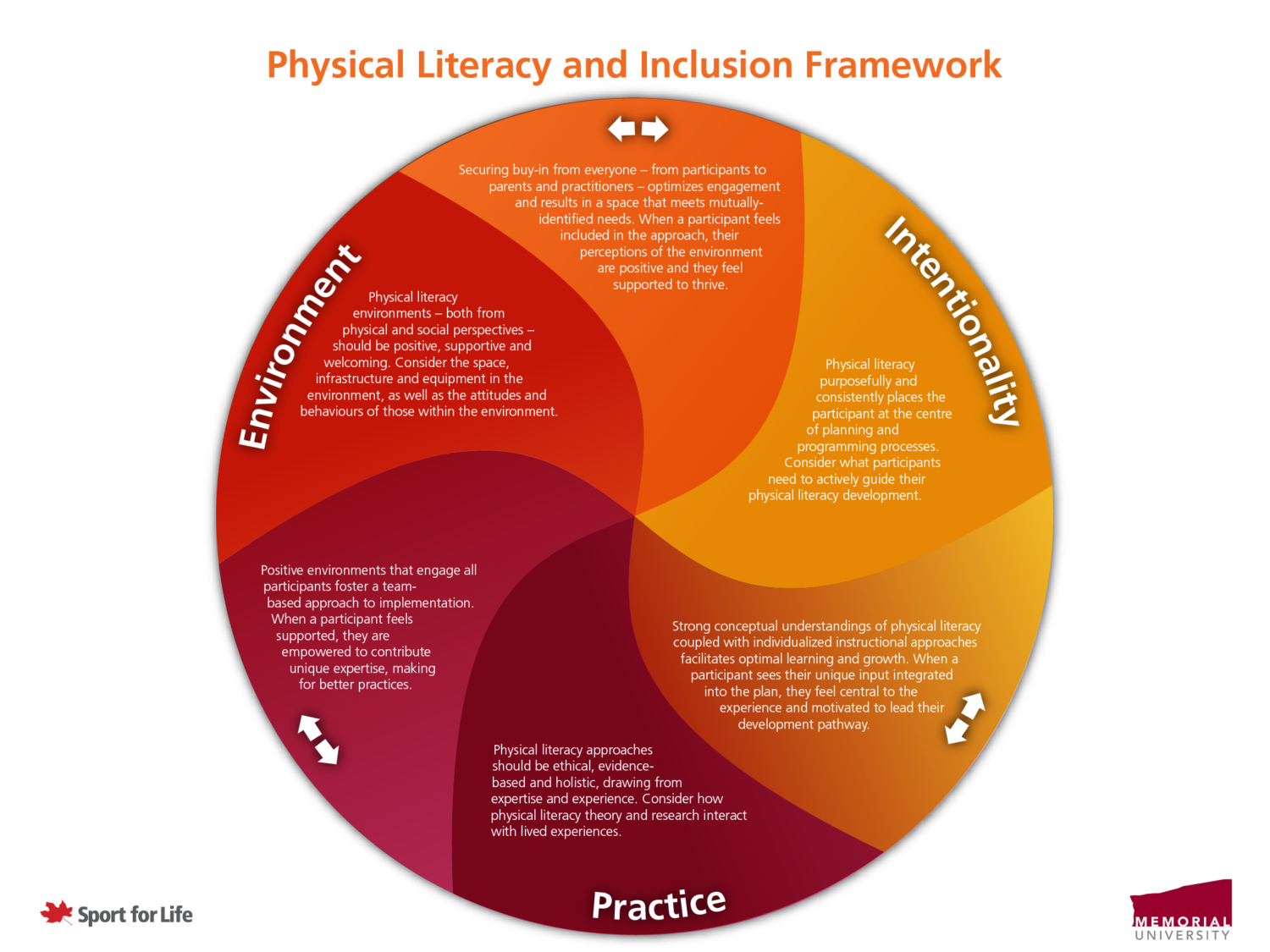Many programs have implemented physical literacy (PL) but often overlook the experiences of persons with diverse abilities due to societal, cultural, and political influences. This can lead to exclusion and marginalization from physical activities. Researchers at Memorial University have addressed this challenge by developing a PL and inclusion framework through direct observation of programming and perspectives from participants of diverse abilities, parents, practitioners, and program administrators. The framework and its three pillars of environment, practice and intentionality offer one lens to support the development of current and future inclusive physical literacy programs.

This blog series will discuss the ten evidence-based best practices for the inclusion of persons with diverse abilities in programming suggested within their research findings. From holistic design to systems of support, and everything in between, find out how to foster inclusion in your programs.
Idealization: Collaboration between stakeholders occurs through non-hierarchical means, whereby all contributions leading towards optimizing physical literacy and its development are considered equally valuable.
By adopting a non-hierarchical approach, we unleash the full potential of participants, parents, and practitioners. This mutual buy-in leads to exciting and rewarding outcomes as we achieve our shared goals, fostering a positive and successful space.
In our collaborative efforts to enhance physical literacy and its development, every idea, no matter how small, and every viewpoint is valued. We cultivate an atmosphere where all stakeholders feel empowered and recognized, working together towards our collective goal.
Putting into practice
Imagine a citywide initiative to promote inclusive fitness programs for individuals experiencing disabilities. The initiative prioritizes collaborative stakeholder engagement and recognizes the value of all contributions. The initiative begins with forming a planning committee with representatives from various sectors, such as fitness professionals, disability advocates, educators, and healthcare providers. These stakeholders bring different perspectives to the table. The planning committee meets regularly to discuss program development, ensuring no single voice dominates the conversation. All members have an equal say in decision-making, valuing each contribution.
Rather than having a top-down approach, the planning committee encourages co-creating fitness programs. This means that individuals with disabilities and their families are actively involved in program design. The committee conducts focus groups and surveys with the target population to gather input on program preferences, accessibility needs, and goals. This ensures that the programs are tailored to the specific needs and desires of the participants.
Recognizing that stakeholders bring unique expertise to the table, the initiative fosters an environment of mutual learning. All stakeholders are encouraged to share their knowledge and skills.
The planning committee organizes regular workshops and training sessions where stakeholders can educate each other. Fitness professionals learn from disability advocates, educators gain insights from healthcare providers, and vice versa. This cross-pollination of knowledge enhances the quality of the programs.
The initiative establishes feedback mechanisms that allow participants, families, and stakeholders to provide input on program effectiveness and areas for improvement. Regular feedback sessions are conducted, and all suggestions, whether from participants or stakeholders, are considered equally valuable. Based on this feedback, changes and adaptations to programs are made to continually optimize physical literacy development.
Through a commitment to non-hierarchical collaboration and valuing the contributions of all stakeholders, the initiative creates a sustainable, inclusive fitness program. Participants experiencing disabilities not only benefit from tailored programs but also feel a sense of ownership and empowerment in their fitness journey, leading to long-term engagement in physical activity. This example demonstrates how all physical activity service practitioners can ensure collaboration between stakeholders through non-hierarchical means, where all contributions are considered equally valuable. This approach fosters inclusivity, empowerment, and optimizing physical literacy for individuals experiencing disabilities.
Tangible takeaways
To achieve collaboration between stakeholders through non-hierarchical means, where all contributions toward the optimization of physical literacy and its development are considered equally valuable, the following recommendations can be implemented:
- Openness to Other Perspectives from the Start: Ensure relevant stakeholders are involved in building your programs from the beginning of ideation. Rather than prescribing a concept, work together on an idea that incorporates all perspectives and addresses the expertise of each stakeholder.
- Open Forums and Dialogues: Organize regular open forums and dialogues where stakeholders from different backgrounds, including participants, coaches, educators, parents, and community members, can share their insights, experiences, and ideas. Creating a safe and inclusive space for open discussions fosters an environment where all voices are heard and respected.
- Equal Recognition and Acknowledgment: Ensure that all contributions, regardless of the stakeholder’s role or background, are equally recognized and acknowledged for their contributions. Celebrate successes and achievements collectively, emphasizing the collective effort in optimizing physical literacy.
- Collaborative Decision-Making: Implement a collaborative decision-making process that involves stakeholders in determining priorities, setting goals, and allocating resources. This approach empowers everyone to play an active role in shaping the direction of physical literacy development.
- Accessibility and Inclusivity: Ensure collaboration platforms and materials are accessible and inclusive for all stakeholders. Consider diverse communication methods, accommodate various learning styles, and provide the necessary support to facilitate active participation from everyone involved.
- Cultivate a Sense of Community: Cultivate a strong sense of community among stakeholders by organizing joint events, celebrations, or gatherings. Building relationships beyond formal roles strengthens collaboration and promotes a shared commitment to physical literacy.
By implementing these recommendations, organizations can create a collaborative ecosystem where stakeholders actively engage with non-hierarchical means, valuing each other’s contributions equally in optimizing and developing physical literacy programs. This approach fosters a sense of shared ownership and harnesses the collective wisdom of diverse perspectives, leading to more effective and inclusive physical literacy initiatives.
This article is one of a series of posts on the Sport for Life website based on the research conducted by Drs. Kyle Pushkarenko and Jeff Crane of Memorial University. Keep an eye on our blog for information on the ten suggested best practices and ways to take action around them over the coming months.
